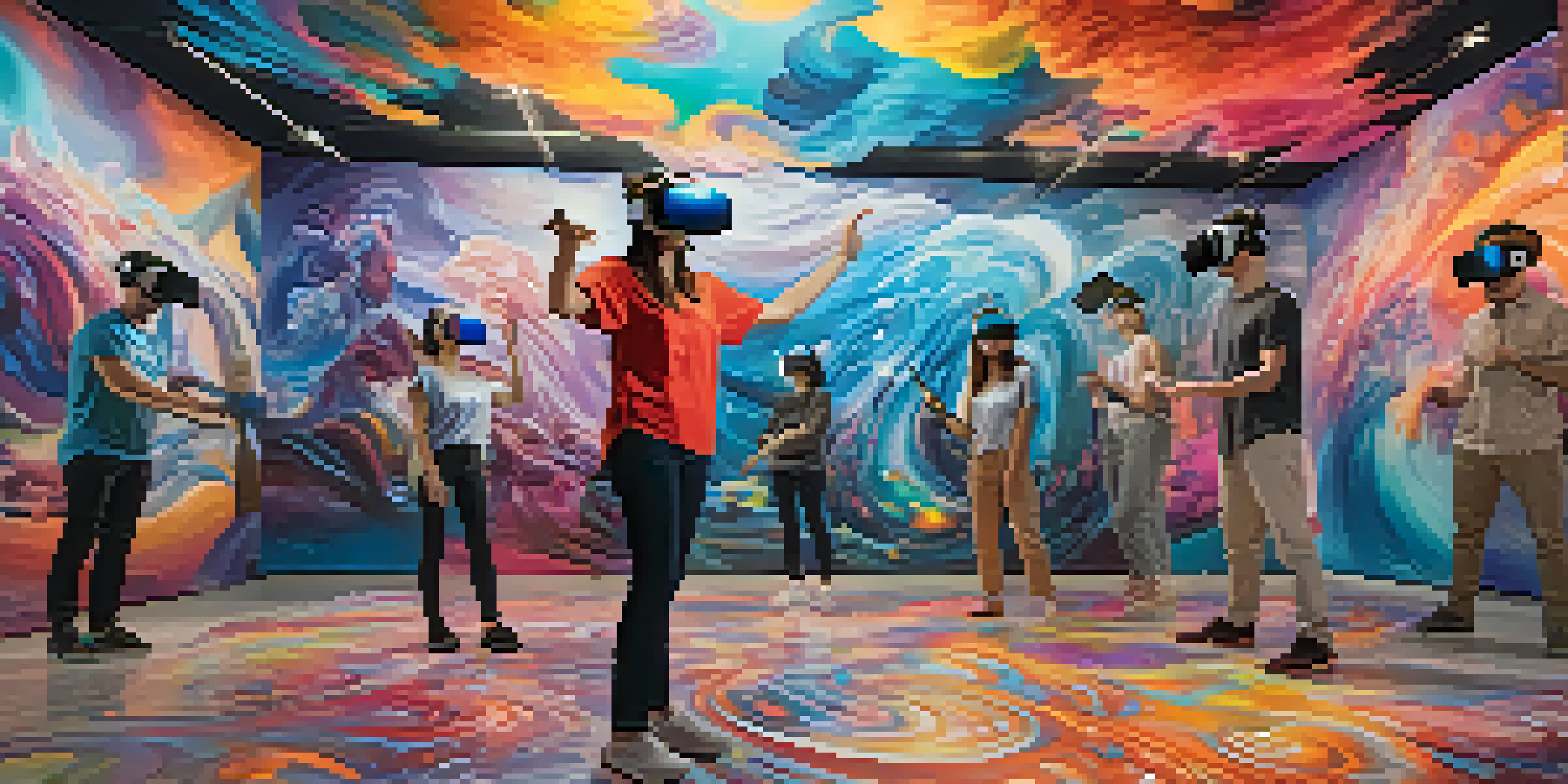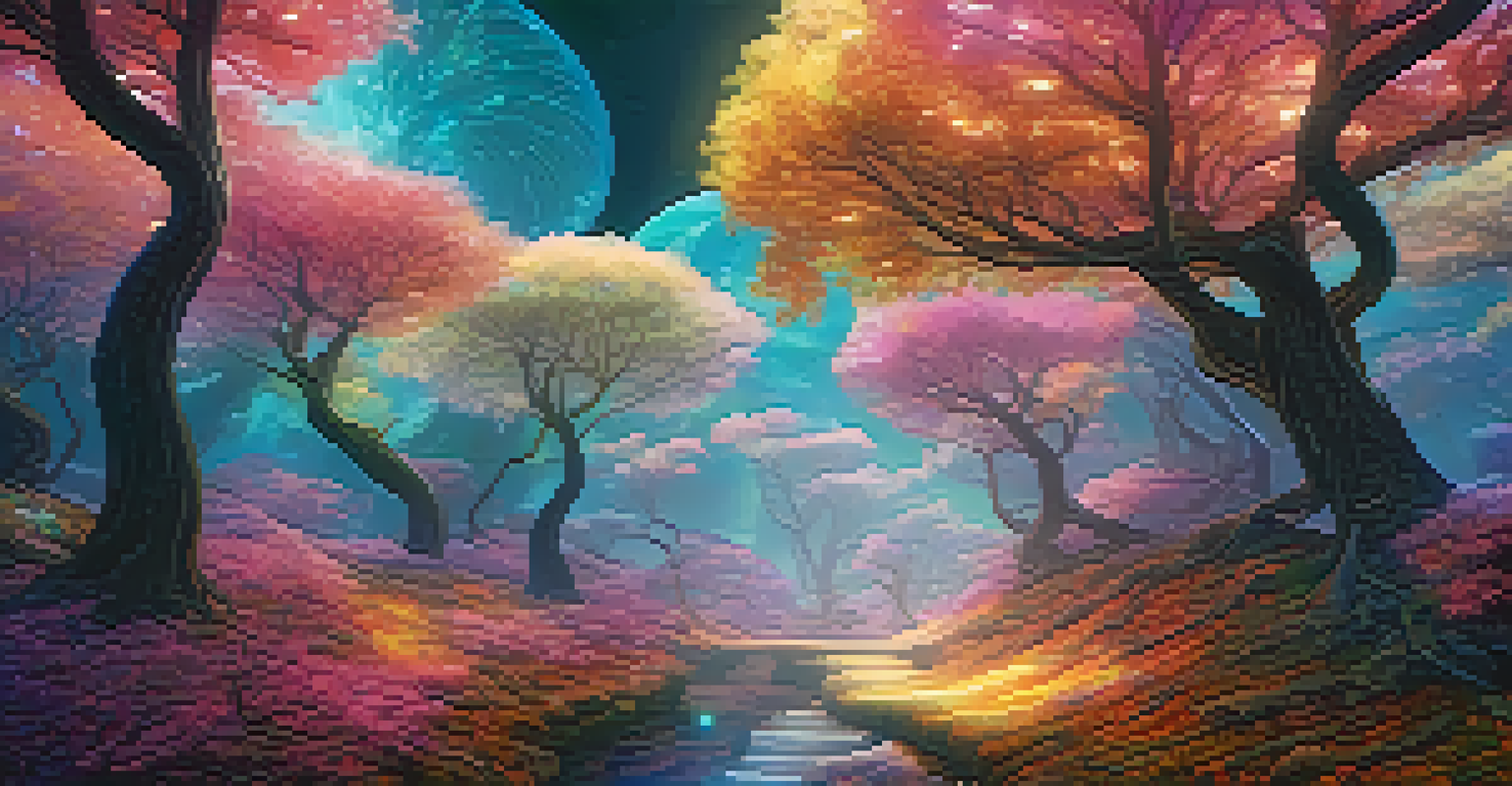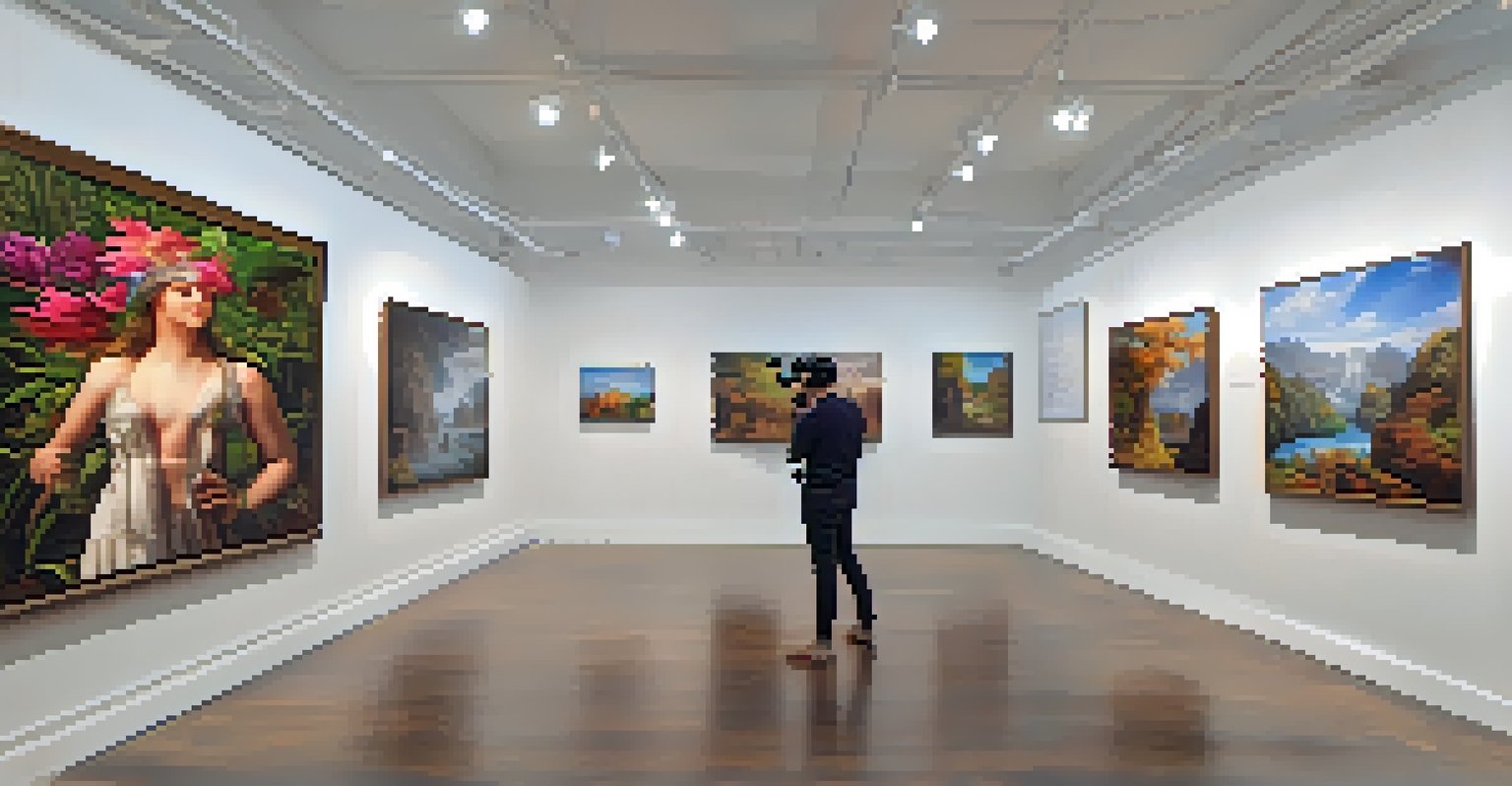The Future of Painting: Integrating VR in Artistic Practices

Introduction to VR in the Art World
Virtual reality (VR) has revolutionized many industries, and the art world is no exception. Artists are now embracing this cutting-edge technology to push the boundaries of creativity and expression. By integrating VR into their artistic practices, painters can create immersive experiences that allow viewers to step inside their artwork, literally and figuratively.
Art is not freedom from discipline, but disciplined freedom.
Imagine walking through a painting, where colors and shapes come alive around you. This immersive experience not only changes how art is perceived but also how it's created. Artists can explore new dimensions and perspectives that traditional painting methods simply can't offer.
As we delve deeper into the integration of VR in painting, it’s essential to understand the impact it has on both artists and audiences. This technology opens doors to new possibilities, fostering a more dynamic relationship between the creator and the viewer.
Creating Immersive Experiences Through VR
One of the most exciting aspects of VR in painting is the ability to create immersive environments. Artists are using VR platforms to build entire worlds where their paintings exist. Instead of viewing a flat canvas on a wall, audiences can walk around and interact with the artwork, making the experience far more engaging.

For instance, imagine an artist creating a surreal landscape where trees sway and colors shift in response to your movements. This kind of interactive art encourages viewers to explore and engage with the piece on a personal level, sparking deeper emotional connections.
VR Enhances Artistic Experiences
Virtual reality allows artists to create immersive environments, transforming how audiences engage with art.
Furthermore, VR allows artists to manipulate dimensions and perspectives. They can create a sense of scale and depth that challenges traditional notions of space in art, leading to innovative and thought-provoking experiences.
Transforming Artistic Techniques with VR Tools
The tools available for VR painting are incredibly diverse, enabling artists to experiment in ways they never thought possible. Programs like Tilt Brush and Quill allow creators to paint in 3D space, offering a new medium that blends traditional techniques with digital innovation.
The painter tries to master the medium, but the medium ultimately masters the painter.
These tools empower artists to unleash their imagination, whether they're building intricate sculptures in mid-air or crafting sprawling murals that envelop the viewer. The flexibility of VR painting means that artists can work without the constraints of physical materials, leading to more spontaneous and innovative creations.
As artists become more adept at using these VR tools, we can expect to see a surge of creativity that redefines what painting can be. This evolution will undoubtedly inspire a new generation of artists to explore the limitless possibilities of virtual reality.
Bridging the Gap Between Digital and Traditional Art
While VR might seem like a departure from traditional painting, it actually creates a fascinating bridge between the two mediums. Many artists are now blending traditional techniques with VR tools, allowing them to enhance their physical artwork with digital elements.
For example, an artist might paint a canvas using oil paints and then create a VR experience that complements the physical piece. This synergy not only expands the narrative of the artwork but also invites viewers to engage with it in multiple ways.
Bridging Digital and Traditional Art
Artists are blending traditional techniques with VR tools, enriching their artwork and expanding narrative possibilities.
This hybrid approach reflects a broader trend in the art world, where artists are increasingly embracing technology without abandoning their roots. The fusion of digital and traditional techniques opens up exciting possibilities for storytelling and expression.
Expanding Accessibility to Art Through VR
One of the most significant advantages of integrating VR into painting is its potential to expand accessibility. With VR headsets becoming more affordable and accessible, people from various backgrounds can experience art in ways that were previously unimaginable.
Imagine a child in a remote area who can explore a famous museum's collection or walk through a gallery filled with contemporary art—all from the comfort of their home. This democratization of art allows for a more inclusive appreciation of creativity, breaking down geographical and socioeconomic barriers.
Furthermore, VR can cater to individuals with disabilities, offering them unique ways to experience and interact with art. This inclusivity not only enriches the audience's experience but also challenges artists to consider diverse perspectives in their work.
The Role of Art Institutions in Adopting VR
Art institutions are beginning to recognize the value of incorporating VR into their exhibitions and educational programs. By doing so, they can attract a wider audience and provide visitors with innovative experiences that draw them into the world of art.
Museums and galleries are now hosting VR art installations, allowing patrons to step into the artist's vision. This not only enhances the viewer's understanding but also creates a memorable experience that encourages repeat visits and engagement.
VR Expands Art Accessibility
The integration of VR in painting democratizes art, making it accessible to diverse audiences and individuals with disabilities.
Moreover, educational programs that teach VR painting techniques can inspire the next generation of artists. By providing access to these tools and technologies, institutions can foster creativity and experimentation among students, equipping them for the future of art.
Looking Ahead: The Future of Painting with VR
As we look to the future, it's clear that the integration of VR in painting will continue to evolve and expand. Artists will find new ways to experiment with this technology, pushing the boundaries of creativity and expression while also redefining the viewer's role in the artistic experience.
The potential for collaboration between artists and technologists is vast, leading to innovative projects that blend art, science, and technology. This cross-disciplinary approach can inspire groundbreaking works that challenge our perceptions of art and its impact on society.

Ultimately, the future of painting lies in embracing these advancements. By welcoming VR into their practices, artists can create captivating experiences that not only enrich their own work but also transform how we experience art in our everyday lives.